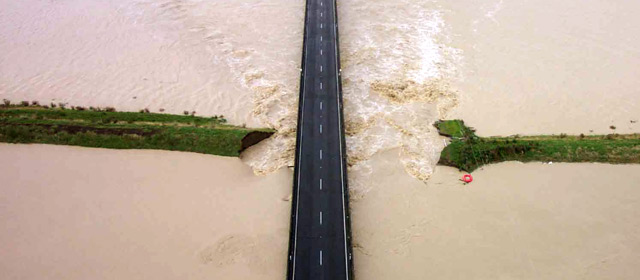Story summary
Why does New Zealand have floods?
Flooding happens quite often in New Zealand, for several reasons:
- Weather systems are constantly sweeping over the country’s narrow islands, bringing heavy rain.
- The many mountain ranges cause moist air to condense and produce more rain. Parts of the West Coast, near the Southern Alps, get more than 13 metres of rain a year on average.
- The country is criss-crossed by rivers and streams that come down from the mountains.
- Since native forest was felled, heavy rain has flowed more quickly into rivers.
European days
The Europeans who began arriving in large numbers in the 1840s did not know there would be frequent floods. Gold diggers in Central Otago often drowned or lost everything when rain-swollen streams swept their tents away. In 1863 more than 100 lives were lost.
More recent floods
Most New Zealand towns and cities have river flood problems. Floods continue to cause chaos and misery, costing millions of dollars to repair. Between 1968 and 2017 there were more than 80 damaging floods.
Floods can happen very quickly. After a few hours of heavy rain, a dry creek can become a raging torrent – called a flash flood. In 1938, the Kōpuawhara Stream near Māhia rushed through a camp of railway workers as they slept. Huts were hurled about, and 21 people died.
In February 2004, there were major floods in the lower North Island and Marlborough in the upper South Island. The Manawatū River burst its banks and helicopters rescued stranded victims. The cost was about $400 million. Then in July, parts of Whakatāne and Edgecumbe were swamped after intense rain, and more than 3,200 people were evacuated.
The remnants of two tropical cyclones (Debbie and Cook) caused widespread flooding, slips and power outages in Bay of Plenty and along the east coast of both the North and South Islands in April 2017. Edgecumbe was flooded again, forcing around 2,000 people to leave their homes.
In January/February 2023, the Auckland Anniversary downpour and the remnants of Cyclone Gabrielle caused widespread flooding, slips and power outages along the east coast of the North Island. Fifteen people died and more than 10,000 had to leave their homes. The final cost to the economy was expected to be more than $10 billion.
Can floods be prevented?
Floods cannot be totally prevented, but stopbanks and dams help control rivers. They may, however, also create problems. Regional councils check rainfall and water levels, issue flood warnings, and control how land is used in risky areas. Flood plains are likely to be regularly flooded, and it is foolish to build on them.





